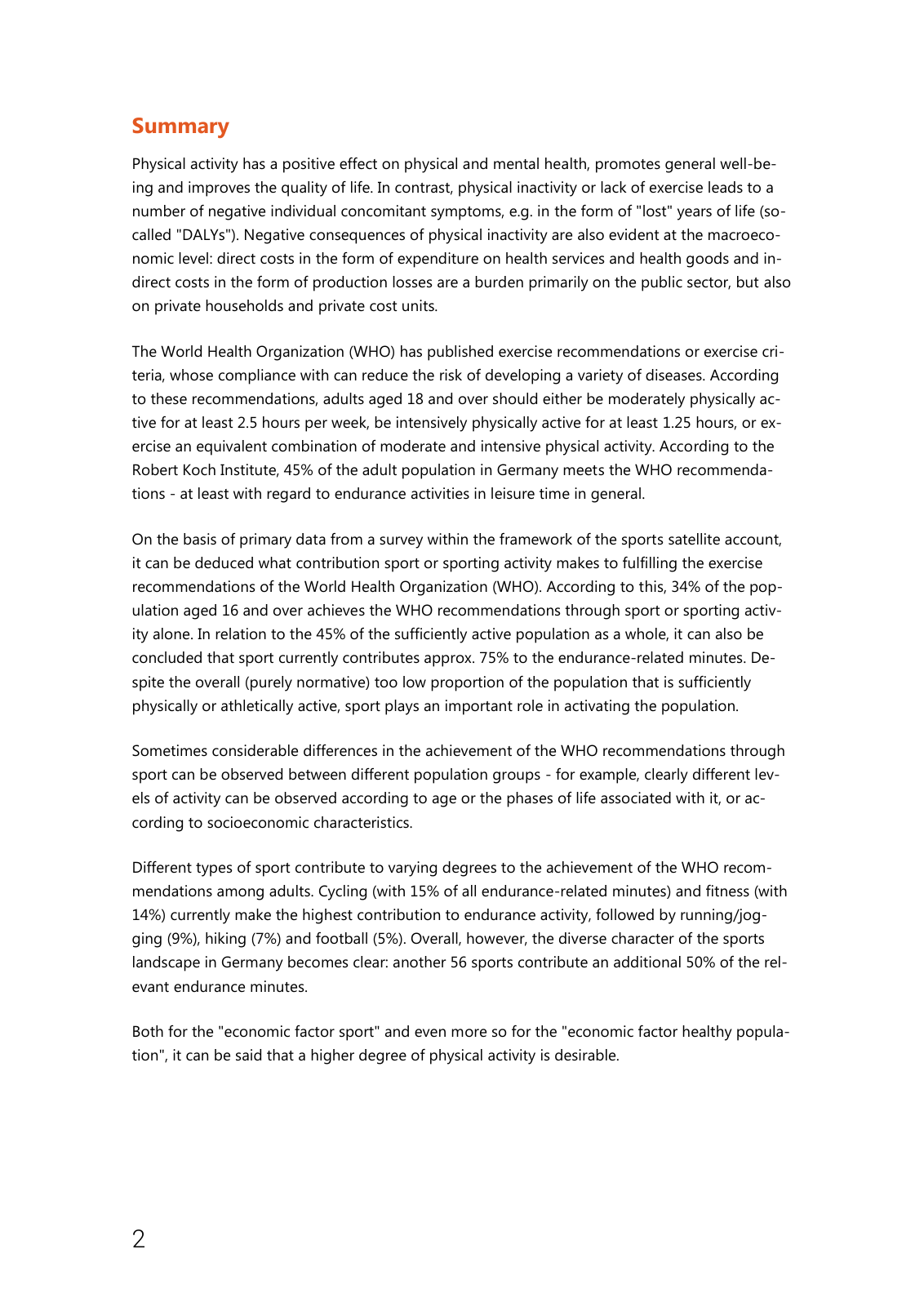2 Summary Physical activity has a positive effect on physical and mental health promotes general well be ing and improves the quality of life In contrast physical inactivity or lack of exercise leads to a number of negative individual concomitant symptoms e g in the form of lost years of life so called DALYs Negative consequences of physical inactivity are also evident at the macroeco nomic level direct costs in the form of expenditure on health services and health goods and in direct costs in the form of production losses are a burden primarily on the public sector but also on private households and private cost units The World Health Organization WHO has published exercise recommendations or exercise cri teria whose compliance with can reduce the risk of developing a variety of diseases According to these recommendations adults aged 18 and over should either be moderately physically ac tive for at least 2 5 hours per week be intensively physically active for at least 1 25 hours or ex ercise an equivalent combination of moderate and intensive physical activity According to the Robert Koch Institute 45 of the adult population in Germany meets the WHO recommenda tions at least with regard to endurance activities in leisure time in general On the basis of primary data from a survey within the framework of the sports satellite account it can be deduced what contribution sport or sporting activity makes to fulfilling the exercise recommendations of the World Health Organization WHO According to this 34 of the pop ulation aged 16 and over achieves the WHO recommendations through sport or sporting activ ity alone In relation to the 45 of the sufficiently active population as a whole it can also be concluded that sport currently contributes approx 75 to the endurance related minutes De spite the overall purely normative too low proportion of the population that is sufficiently physically or athletically active sport plays an important role in activating the population Sometimes considerable differences in the achievement of the WHO recommendations through sport can be observed between different population groups for example clearly different lev els of activity can be observed according to age or the phases of life associated with it or ac cording to socioeconomic characteristics Different types of sport contribute to varying degrees to the achievement of the WHO recom mendations among adults Cycling with 15 of all endurance related minutes and fitness with 14 currently make the highest contribution to endurance activity followed by running jog ging 9 hiking 7 and football 5 Overall however the diverse character of the sports landscape in Germany becomes clear another 56 sports contribute an additional 50 of the rel evant endurance minutes Both for the economic factor sport and even more so for the economic factor healthy popula tion it can be said that a higher degree of physical activity is desirable

Hinweis: Dies ist eine maschinenlesbare No-Flash Ansicht.
Klicken Sie hier um zur Online-Version zu gelangen.
Klicken Sie hier um zur Online-Version zu gelangen.